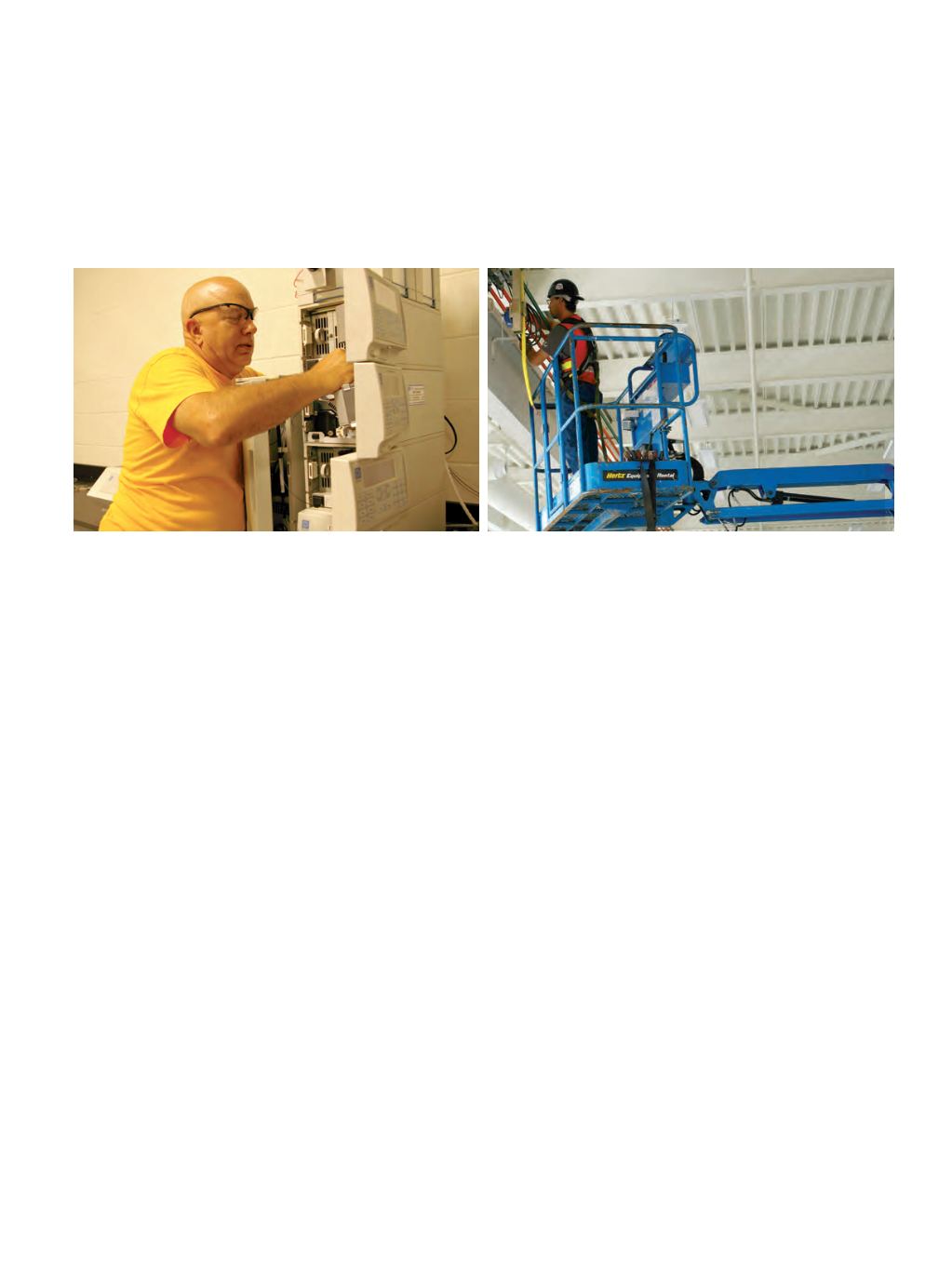
16
view . fall 2011
It was the start of a new era for
engineering at UWindsor
as the first
occupants of the $112-million Centre for
Engineering Innovation (CEI) began their
move into Phase I of the building in July.
More than 60 laboratories, work centres,
meeting rooms and teaching spaces are
located in Phase I, which also includes the
industrial courtyard and crane bay.
Among the dozens of laboratories and
workspaces that have relocated in Phase I
is the Intelligent Manufacturing Systems
Centre of Research Excellence. The IMS
Centre is the first of its kind in North
America and allows students to design
products, configure the manufacturing
systems to make them, and provides
unique opportunities to experiment with
the entire chain of innovation, says
Dr. Hoda ElMaraghy, Canada Research
Chair in Design and Manufacturing.
“It’s a factory in a lab,” says ElMaraghy,
an engineering professor and director of the
IMS Centre. “It allows us to not only make
things within that factory but to reconfigure
its layout. So, if the market needs change in
six months, we can reconfigure the whole
layout in one hour.”
Opportunities for collaborative
partnerships with industry and research
to benefit the community are a driving
force behind the CEI. Nowhere is this
more evident than in the Wireless
Communications and Information
Processing Lab (WiCIP) now located there.
Dr. Narayan Kar, a Canada Research Chair
and professor of electrical and computer
engineering, received a grant from the Essex
Power Corporation to develop a wireless
fault detection system for electrical power
distribution lines. He is working with
Dr. Kemal Tepe, who specializes in wireless
communications, to develop a device that,
when attached to power lines, identifies
faults when and where they occur and
wirelessly transmits that information to the
power corporation.
“It cannot prevent a fault from
happening but it would speed up the repair
process so that it would lessen the amount
of time people would have to remain in the
dark,” Dr. Kar says.
Kar’s Centre for Hybrid Automotive
Research & Green Energy (CHARGE) is a
state-of-the-art lab also housed in the CEI’s
Phase I. It focuses on the development of
an improved electric drive train system for
electric and hybrid vehicles. Work in the
CHARGE lab will increase the capability,
energy efficiency and performance of the
electric motor, reducing carbon emissions
and dependence on fossil fuels.
Keeping the automotive industry
internationally competitive and ecologically
responsible is the goal of Dr. Daniel Green,
Canada Research Chair in Development &
Optimization of Metal Forming Processes.
Green’s research program will cover the full
spectrum of metal forming manufacturing
processes, from theoretical research to
use in industry. His focus is on the use of
lightweight materials in automotive parts
manufacturing, with expected benefits for
the aerospace and appliance industries
as well. Green says that the manufacture
and use of lightweight materials will
reduce vehicle mass and contribute to the
reduction of greenhouse gas emissions, with
far-reaching economic and environmental
implications.
Construction on the CEI building will
continue through the next several months.
Completion of Phase II is scheduled for
Summer 2012.
CENTRE FOR ENGINEERING:
PHASE ONE MOVE-IN DAY ARRIVES
Lab technician Bill Middleton installs air monitoring equipment in one of
the new environmental engineering labs in the first phase of the Centre for
Engineering Innovation.
Steve Cicilino, a technician with Kone Cranes, installs power lines for
a crane that will be used in the industrial courtyard in the Centre for
Engineering Innovation.
BY LORI LEWIS


